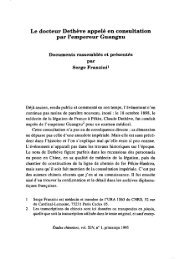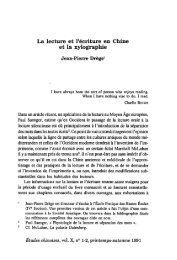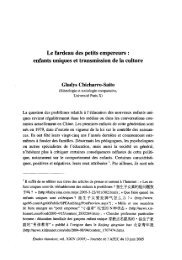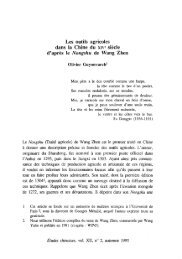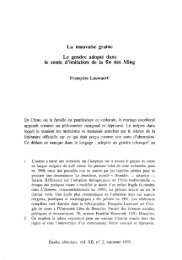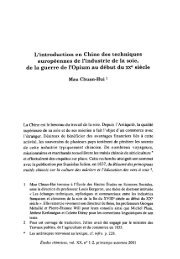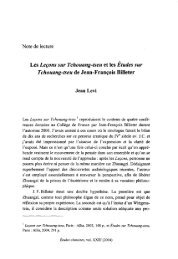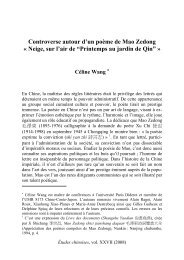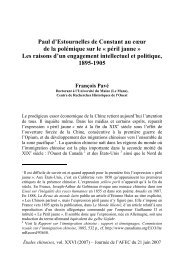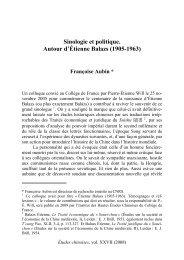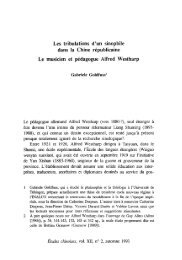You also want an ePaper? Increase the reach of your titles
YUMPU automatically turns print PDFs into web optimized ePapers that Google loves.
Comptes rendus<br />
account the spread of cotton is stated as having started in the Yuan in<br />
northern Suzhou and Songjiang préfectures, but when its commercial<br />
importance is somewhat surprisingly dated only to the Ming, one would<br />
like to hâve been provided with more detailed explanations.<br />
During the early Ming period, the well-known pressures put on<br />
Suzhou at the beginning of the Ming by Zhu Yuanzhang could hâve been<br />
maintained, in Marmé's view, if a Zhu Yuanzhang-like emperor would<br />
hâve succeeded the founder. Marmé relativizes their impact, however, and<br />
describes in détail Suzhou's vicissitudes under subséquent emperors and<br />
state régulations; he then dates the nadir of Suzhou's fortunes to the early<br />
fifteenth century. Within this early économie history, Marmé is not always<br />
consistent: there are fréquent sentences stating that Suzhou ("and the surrounding<br />
préfectures") bore the highest levels of land tax in the empire,<br />
while other data are presented that show that such was not strictly true in a<br />
relative sensé. In gênerai, however, both gênerai policies, which continued<br />
to stress agricultural taxes, and their unintended opportunities for évasion,<br />
tended to favor a trend toward increased commercialization throughout the<br />
necessary fifteenth-century reforms, helped by Suzhou's closeness to a<br />
foreign market. Exactly because of the importance of Suzhou's agricultural<br />
taxes for the state, the crown's fortunes remained hostage to the<br />
économie well-being and minimal coopération of the prefecture's most<br />
heavily taxed landholders.<br />
In Suzhou's agricultural history in particular, Marmé makes a consistent<br />
effort to présent quantitative data to back up his narrative, or he<br />
déclares honestly that they are lacking. However, as soon as social trends<br />
are commented upon, his touch with reality seems less assured; the discussion<br />
on tax captains, for example, seems to me more based upon what<br />
should hâve happened theoretically, rather than what we know did happen.<br />
Marmé claims that Suzhou achieved hegemony in China by the late<br />
fifteenth century (p. 143), because the Ming state's policies triggered<br />
Suzhou's commoditization, and the sale of thèse Suzhou products caused<br />
the articulation of marketing hiérarchies elsewhere. Basic to this hegemony,<br />
in addition to rice, was silk, and Marmé gives us some glimpses of its<br />
market. His treatment remains centered on the agricultural background,<br />
417



